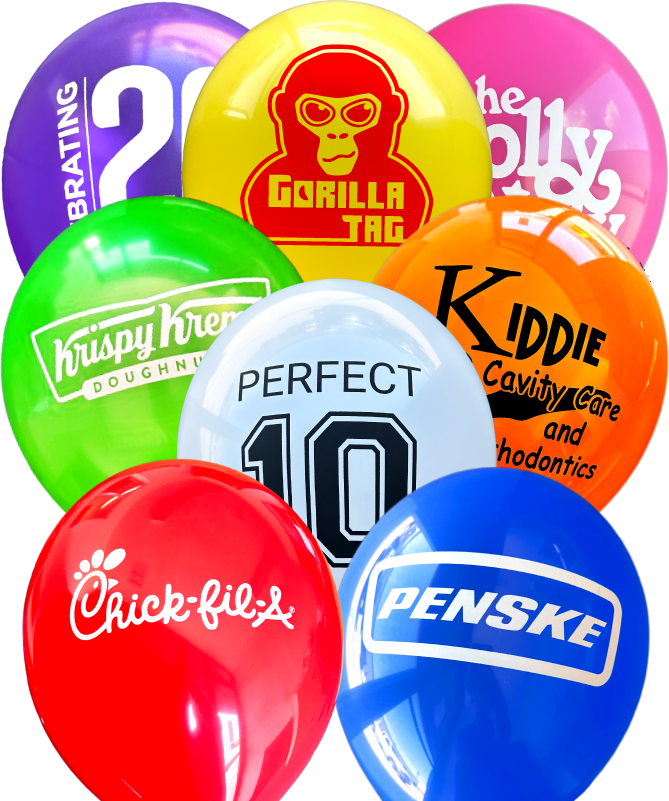
Inflate Balloons Guide
I believe that almost everybody has tried to blow up a balloon in his life at least once. Your attempt could have been a spectacular success or a complete failure. To become confident in your skills of blowing up the balloons, you can use some useful hints on inflating balloons given below.
Inflated and Deflated Balloons
If Inflate balloons are pumped up, they become weightier than deflated ones. The same can be said about helium balloons since this gas also has mass. However, deflated balloons are of a higher density in comparison with blown-up balloons. If the balloon is filled with gas that is not so heavy as air, its density is lower than that of atmospheric air. This is the reason why the balloons are buoyant.
The interesting fact is that a helium-filled balloon may sink if it gets into the helium or even hydrogen atmosphere because the density of the atmosphere surrounding us is higher than that of a helium balloon. If you happen to have pumped up the balloon with a heavier gas, it will not rise because of its bigger weight. Unlike a blown-up balloon, a deflated one does not displace so much air. This is why it is impossible for surrounding air to make it rise.
Helium Tanks for Filling the Balloons
The modern market provides customers with helium canisters of different sizes and capacities. In case you opt for helium-pumped balloons for any kind of celebration, you will have to purchase a canister according to your needs. Helium canisters are perfect to be utilized for inflating both latex and foil balloons. A versatile helium tank can be applied in different kinds of works. Practically all helium tanks are portable and equipped with a well-designed nozzle allowing for an easy filling with blown-up gas. A big number of tanks sold today are recyclable. The aluminum helium canister has thick walls that make it strong and durable. Besides helium, gases like argon, nitrogen, or neon can be kept inside this cylinder.
Floating Time of Helium Balloons
Balloon floating time is predetermined by its size, material it is produced from, and attachments. Blowing up latex balloons with helium, one should remember that this type of material is porous, thus helium can start leaking the very moment the balloon has been filled. External factors like accessories, decorations, and temperature can affect the float time which is on average 8-12 hours.
Foil balloons pumped with helium have a much longer floating time in comparison with latex ones. They can remain buoyant for a few days and even weeks. Float time can be shortened because of curly ribbons and garlands as they contribute to a bigger weight of balloons. Hi-Float that covers the internal side of the balloon, can extend its floating period preventing helium from leaking.
How to Inflate Balloons for Optimal Float Time Properly
While inflate balloons, be careful not to exceed an acceptable level of the gas inside. Overfilled balloons look like a lightbulb or pear that makes them look ridiculous. The problem is that extra gas can misshape the image printed on the balloon. Moreover, a balloon can pop if it has more helium than it is meant to keep.
You should also remember that mylar balloons are bigger than latex ones and thus they require more gas filler. The floating time of printed balloons may differ considerably regarding external factors like discrepancies in altitude and temperatures. If you are going to fasten a colorful strip of fabric to the balloon, fix it below a knot. It is desirable to blow up the balloons 1-2 hours before the celebration or event.
How Balloon Printers Take Measurements of Latex Balloons
The right method to estimate the size of a latex balloon is to take its measurements after it is properly and completely pumped up with helium. Such a method implies counting the height of a personalized balloon from its top to a valve. This technique allows vendors to decide how to place the image so it will look fabulous on a flying balloon. If the size is determined correctly, the longevity of the balloon will be bigger and you will enjoy the decorations no matter whether they are applied at the advertising event or home celebration. The most popular balloon size for printing constitutes 10 inches.
Using a Helium Canister and Balloon Pump for Filling and Sealing Latex Balloons
Once you want to prolong the flying time of the balloon, it is essential to utilize the helium canister properly. While applying a helium canister, the first thing to do is to place it with a nozzle the opposite way from you, open a valve by turning it counter-clockwise three / four times. Then choose a balloon and insert the nozzle head into the opening. It will be easier to use both hands at the moment. make sure you use both hands. To start pumping up the balloon, hold it and the nozzle and force down the pulverizer. This way you will let the helium get inside. The very moment the balloon is pumped to a necessary level, stop helium supply. Take the balloon off the nozzle shaft, grip it tightly, and remove it quickly. Since the balloon is elastic, stretch its tail and form a knot. This will make it airtight so the gas will not leak.
Using a Helium Canister and Balloon Pump for Filling and Sealing Mylar Balloons
Foil balloons can be pumped up with the help of a helium tank, or a balloon pump. Make sure your helium cylinder is at room temperature before use. First of all, you should fully unfold the balloon and place it over the nozzle, press down on it to start inflation. It may not go as far as a normal balloon, so, you should clasp the balloon neck tightly around the sprinkler when letting the helium into the balloon. Since the foil balloon is pumped up with the helium through its valve, an inflation nozzle should be removed. This will ensure an automatic sealing of the balloon. Do not forget to fasten a ribbon to the bottom part of the balloon neck, exactly below the vent hole. In doing so, it is effortless to add some gas without replacing the attachments when the balloon becomes soft.







